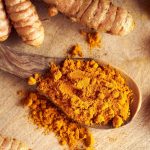Chronic venous insufficiency (CVI) describes persistent incompetence of the deep and perforating veins in the lower extremities. Swelling, darkening of the skin, and ulcerations can accompany leg pain, tiredness, and itching. CVI prevalence ranges from 10-15% in men and 20-25% in women. Traditional treatment includes external compression (support stockings) and for some, vascular surgery (venous stripping or sclerotherapy).
Extracts of horse chestnut seeds (HCSE) have been extensively studied and used for the treatment of CVI. The (German) Commission E has extensively evaluated and approved the use of HCSE for the treatment of CVI, especially when used as an adjunct to compressive therapy. There is good data to support HCSE’s effectiveness.
Pharmacology
The medicinal portion comes from the dried leaves and seeds. The most active ingredients are called escins (or “aescins”). The (a)escin fraction, measured as a percent and reported in milligrams, has been standardized by some pharmaceutical manufacturers.
Mechanism of Action
In general, (a)escins are thought to act as anti-exudative and anti-inflammatory agents, decreasing vascular permeability and thus preventing edema formation.
Clinical Trials
To date, there are approximately 18 published randomized controlled clinical trials (RCTs) evaluating the safety and effectiveness of HCSE in patients with CVI. These studies have all been performed and published in Germany or France between 1973 and 1996.
In comparison to support stockings (compressive therapy), compliance with HCSE was better (98%) than with compressive therapy (90%). While the compression group achieved a peak effect at four weeks, the HCSE group achieved a similar effect at 12 weeks, but both therapies were clearly superior to placebo.
Adverse Effects and Drug Interactions
Oral HCSE appears to be well-tolerated. The most common side effects are itching, nausea, heartburn, headache, and dizziness. Most studies show no difference when compared to placebo. A recent observational study found that adverse events occurred in less than 1% of 5,000 patients treated with HCSE in therapeutic doses. There are no studies on the use of HCSE in pregnancy or while nursing, and no reported drug-drug interactions. However, there are two reports of kidney toxicity and one report of liver injury in patients given large doses of (a)escins. It is possible that HCSE may increase the blood-thinning activity of Coumadin®.
Formulation and Dosage
When used at the recommended dose, HCSE appears to be safe, effective and compares favorably to other currently available therapies for chronic venous insufficiency in the United States.
Oral Standardized HCSE preparations vary in their total milligram dosage which are usually expressed as a percent (from 16-22%) of (a)escins. The recommended dose is 50 mg (a)escins twice a day, with a maximum daily dose of 150 mg per day. Occasionally, HCSE is a component of a multi-herbal preparation that often includes Ruscus aculeatus or butcher’s broom, for which there are few good clinical data.
Until recently, standardized HCSE preparations were only available in Europe. In 1998, Pharmaton, a division of Boehringer Ingelheim Pharmaceuticals, released Venastat® in the United States for the “promotion of leg vein health.” This standardized HCSE represents one of the first examples of large pharmaceutical companies producing herbal preparations.
Conclusions
Standardized HCSE appears to be an effective treatment for the edema and symptoms associated with CVI and should be considered in the treatment of non-pregnant, non-lactating patients. While compression stockings are still considered first-line therapy, HCSE can be used alone in patients who cannot tolerate or comply with compressive therapy. The most effective regimen combines standardized HCSE with compressive therapy.
Because of the lack of data, HCSE should not be used in patients with acute or chronic DVT (blood clots in the deep veins of the legs), in patients on the blood-thinner Coumadin®, or in patients with kidney or liver insufficiency. Longer clinical trials in patients with similar grade CVI, using validated symptom measures and standardized leg volume measurements are still needed prior to HCSE becoming part of standard medical formularies.








